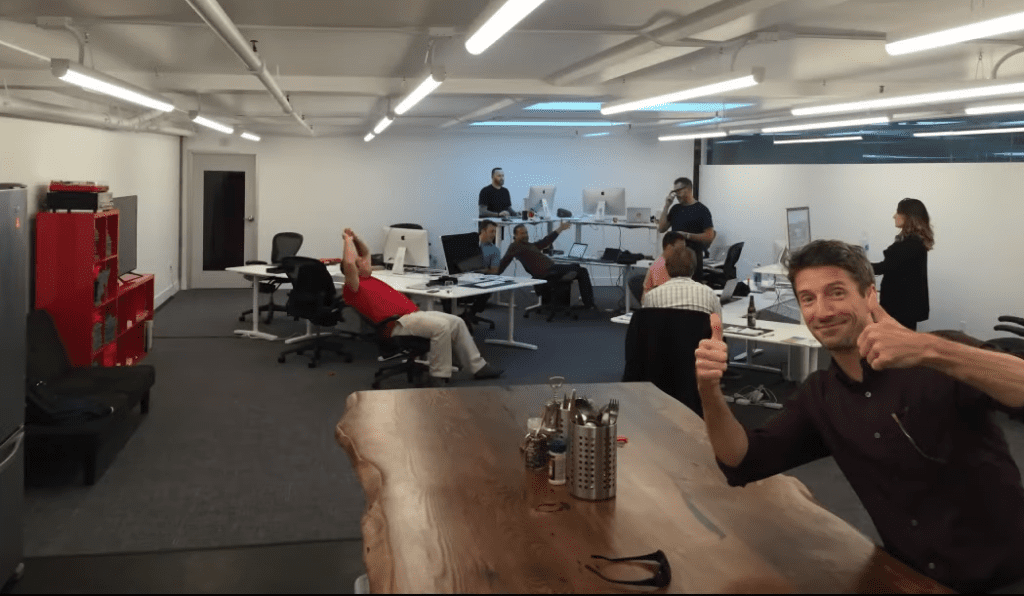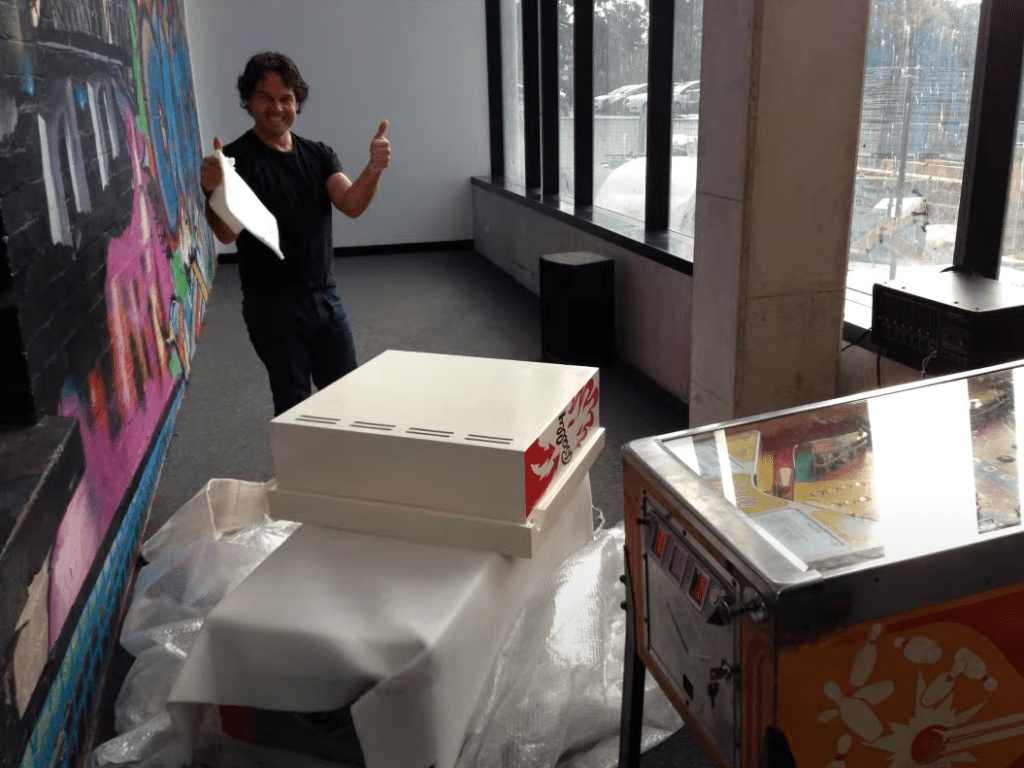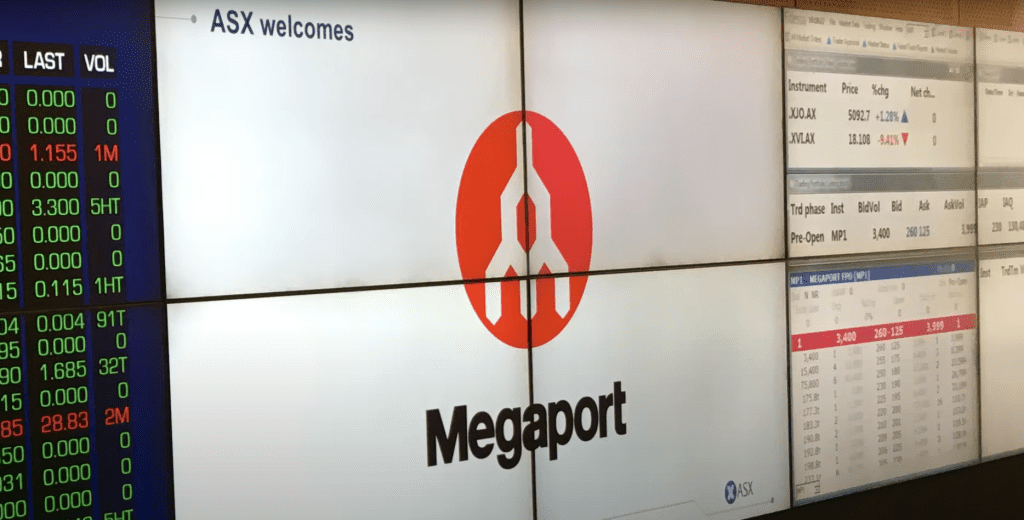July 20, 2023
“It was like swimming out to the ocean with this belief that the wave was coming,” recalled Bevan Slattery, Founder and Chairman of Megaport.
“You’re waiting there for two years and you start to see the wave, then you really see the wave. And the great part is, with that vision, if you’re right, you’re the only person there to catch the perfect wave.”
While not an alien feeling for a man recognised as one of Australia’s leading entrepreneurs – having founded some of the country’s most successful technology companies – that magical moment when the crest emerges still carries an element of doubt even for an experienced business builder.
“The problem is, 99 times out of 100, you think you’re right but the wave never comes,” he said. “But fortunately for us, it did.”

Slattery was referencing the rise of Megaport, the Brisbane-based company he built in 2013 to “do to networking what Amazon did to compute”.
Introducing the concept of network-as-a-service and elastic interconnection, the platform was created to provide a “secure, seamless and on-demand” way for enterprises, networks and services to interconnect.
“When we started Megaport, it was like all the other start-ups I had before,” Slattery added. “It was a complete focus around the vision. We were so focused on it – it wasn’t about the office space or the perks, it was solely on that vision.”
And this is an entrepreneur speaking from experience, with a conveyor belt of high-performing companies launched under his direction – PIPE Networks, NextDC, Superloop, Cloudscene, iSeek, Asia Pacific Data Centre Trust and SubPartners.
“We built an amazing team around that vision at Megaport and we were frugal as hell,” he said. “We just ran and ran so quickly and that is always some of the greatest moments of start-ups.”
This was hard – long hours were a given and financial control was a necessity. But beyond the pain barrier was a small group of individuals doing things that in the case of Megaport, had never been done before.
Outlined in ‘The Rise of Megaport’ – a short-form documentary charting the past 10 years of the market disrupter – the story of Slattery and his founding team is a story of creativity and resiliency in equal measure.
Building a business, educating a market
As the only person out in the ocean capable of catching the wave, Slattery and Megaport had distinct first-mover advantage in the market.
The launch of a software defined network (SDN) capable of helping businesses rapidly connect networks to services via an easy-to-use portal or open API was an advanced idea. Problem was, the fabric innovation on show didn’t resonate immediately with customers.
“Megaport as a concept was at least 2-3 years before it’s time,” noted Belle Lajoie, one of the first members of the Megaport team.
“For the foundation team that went out to commercialise this product, we literally drew the same picture 3000 times during the first 18 months. Nobody understood it, it was a circle and endpoints to describe what even a fabric was.”
At the time in Australia, 10 gig interfaces were not even available meaning Lajoie and the team received a lot of, ‘cute concept, good luck with that’, responses from bemused customers.
“We were like, ‘this is a legitimate business, we’re on the ASX and this is not a concept,” she affirmed. “We were a commercial business.”
Lajoie now runs Cloudscene as CEO, in addition to holding the Chief of Staff position at Soda – also under the Slattery umbrella and designed to act as a launchpad for businesses seeking to scale across Australia and beyond.

“In the early days of Megaport, what people don’t know is that most of the foundation team actually took a significant pay cut to be there,” Lajoie noted. “We were so aligned and amazed at this vision and some of the first people in the world to get the concept.
“We would do whatever it took, we’d take out the bins in Church Street and we’d put the steak on the BBQ every Friday. It was all about alignment and respect for each other and doing absolutely whatever it took to get the job done.”
Echoing Lajoie’s observations, Slattery’s assessment of the early interactions with customers was that the simple concept of Megaport “actually broke people’s brains”.
“It broke people’s brains who were so experienced in the industry,” he said. “I struggled with that for years.”
Citing the first time he took the industry under the covers of Megaport at the Pacific Telecommunications Council (PTC), Slattery recalled a feeling of gimmickry rather than invention.
“It was almost like a party trick that first year,” he stated. “People would go, ‘that’s kind of cool but what would I use it for?’ And I’d reply to connect to the cloud and other carriers etc.
“What we talk about all of the time is the grind, the grind of having to go out and not just try to sell something but first, explain the vision.”
In other words, first educate the market of the opportunity available, then start to sell.
“We would have spent – and I’m not even joking – 2-3 years on the grind, explaining to the industry and the people what Megaport is and more importantly, why it was going to be the future of networking for everyone,” Slattery said.
When cloud adoption started to accelerate in 2017 – as Microsoft Azure, Google Cloud Platform and Oracle Cloud joined Amazon Web Services (AWS) in reshaping company priorities – that was when the Megaport match was lit.
“All of a sudden, everyone wanted access to the enterprise and everyone needed to get to the data centre to do that,” Slattery outlined. “That was really the breakout year when we had to go from 100 data centres to 500 within 2-3 years. That was incredibly exciting but it was batshit crazy.”
The moment things got real for Jason Bordujenko – now Global Head of Channel Solution Architecture – was when the business started connecting regions together, crossing international borders in the process.
“This wasn’t just the east coast talking to the west coast of the US, it was the US talking to Australia and then onto Europe,” he noted. “That made a challenge of scale as we needed to adapt given those longer latencies. But the real message was the ease of use and the platform was just consistent across all of those regions.”
Building Megaport out of the ground
Spearheading the early build days at Megaport was a core group of technology specialists tasked with generating capabilities out of the ground from nothing – namely Cameron Daniel, Mitchell Warden and Adam Wells.

As Vice President of Technology, Daniel recalled the early request from Slattery to get the east coast of Australia up and running within three months of launching.
“Mitch remembers a different number but I remember three months, so we had to build the network, write the systems, get all the stuff updated and get everything released in this insane timeframe,” he said.
“And that included us flying around to do the installs as well. We hit the market but we didn’t really have a portal in place at that point. Customers could email us and we would enter behind the scenes but the magic still happened – just without a pretty face which was a lot of fun.”
Similar to Daniel, Warden – as founding engineer – was constantly thinking about scaling given the desire to go big from the outset.
“I think we had a lot of doubts about whether the things we were building were going to scale well,” he acknowledged. “In the end, we were pleasantly surprised about how far we got with the things we had built and how well we had scaled.
“It probably wasn’t until we were getting near 100 or more POPs [points of presence] that we had to really rethink some of the bigger decisions that we’d made about how to scale things on the network.”
When Wells first arrived as founding developer, the early-stage start-up had zero capabilities in terms of systems or tools.
“We had the advantage of being such a small team that when we were making a product decision we’d all just turn our chairs around,” he remembered. “Many of the decisions early on were so collaborative and we were all on the same page, in the same room, sitting next to each other.”
For Wells, this represented one of the most productive times of his professional life given the tight-knit team, meaning decisions were made almost instantly.
“You could have a great idea at morning tea and by afternoon tea, it would be in production,” he said. “That’s a productivity and speed of development I’ve never experienced in my life.”
As Vice President of Asia Pacific between 2014 and 2021, Joshua Munro accepted that the magnitude of what was built at that time wasn’t recognised until long into the future.
“Sitting around Church Street on trundle tables was really special to be part of,” he shared. “Everyone was bought into the vision and everyone was bought into the outcomes that we needed to achieve. The team up in Brisbane did an exceptional job in maintaining that culture, mateship and camaraderie that is ultimately still carried through Megaport today.”
‘King of the ASX‘
During the formative years of Megaport, Slattery operated as the sole shareholder and investor while balancing funding a second company in the form of Superloop. On the one hand, he was realising his vision of elastic interconnection while on the other, he was building a fibre network underneath it.

But Slattery understood that for Megaport to become a global player, the business needed to operate in insolation as a one product shop.
“The lead up to listing the company was an exercise in naivety and sheer audacity,” explained Celia Pheasant, company secretary since 2013.
“I remember when Bevan came to me and said, ‘I reckon we can list this thing and raise money on the stock market’. This was a company at the time which had 28 employees, had an idea and a platform that wasn’t well known or understood.
“The audacity of thinking that we could list this and raise money – it was an amazing time but a good thing that we were innocent and naive about how we would do it.”
Megaport was Slattery’s fifth IPO in a decade – which finalised in December 2015 – leading to the entrepreneur assuming the title of ‘King of the ASX’ by the media.
This was a bold and audacious move however. The business was three years old, had an annual run rate of just over $2 million and approximately 200 customers.
“But we had a pretty bold vision and we really needed to take this to North America,” Slattery stressed. “For us to do that, we needed to raise $20 million and I think I was pretty much at the acceptable limit that my wife was prepared for me to fund, so the ASX was a natural place to go.
“It was cool to see it preform so well on the first day but because this was my fifth IPO, I know what that comes with and that’s the weight of expectation. So as much as you celebrate that, it’s down to execution from there.”
Fast forward to 2023 and the execution is evident. The business now operates across 24 countries and 145 cities – a “nightmare” job to administer, noted Slattery – building over 800 data centres around the world to service more than 2700 customers.
“What is quite incredible is that Megaport is evolving again – more from the leader of elastic interconnection and more into a platform and we’re continuing to innovate,” claimed Matt Simpson, speaking as Vice President of Global Business Development.
“I think that’s what’s exciting about the company – the platform and automation comes first and that’s what we’ve always stuck by.”
Fuelling future growth is Michael Reid as CEO, appointed effective 15 May to lead the company into its next stage of expansion locally, regionally and globally.
“I’d struggle to be more proud than I am of the business today,” Slattery accepted. “The one thing that’s really interesting for me is where to now? Megaport was all about taking people to the cloud in the way that the cloud operates. Our job for the next 10 years is to take it through the cloud and beyond.”
Inform your opinion with executive guidance, in-depth analysis and business commentary.